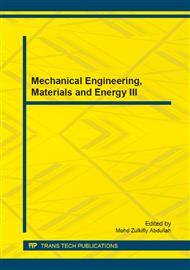p.28
p.34
p.38
p.42
p.47
p.51
p.56
p.61
p.65
Inductively Coupled Plasma Modified Silica Material Technology Research
Abstract:
The using inductively coupled plasma etching techniques, the surface of fused silica was etched by CF4 as etching reaction gases. The results show that the fused silica surface scratches buried defects can be effectively removed with no replication effect, with the etching process proceeds, fused silica at 355nm laser light R: 1 under irradiated, the initial damage threshold of component surface is worth to an effective improved, damage resistance level of element surface more balanced, low damage threshold is worth to significantly improve.
Info:
Periodical:
Pages:
47-50
Citation:
Online since:
December 2013
Authors:
Keywords:
Price:
Сopyright:
© 2014 Trans Tech Publications Ltd. All Rights Reserved
Share:
Citation:


